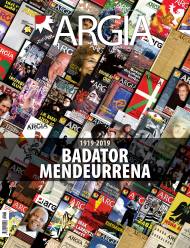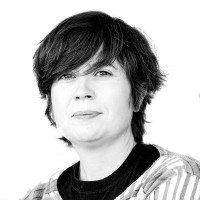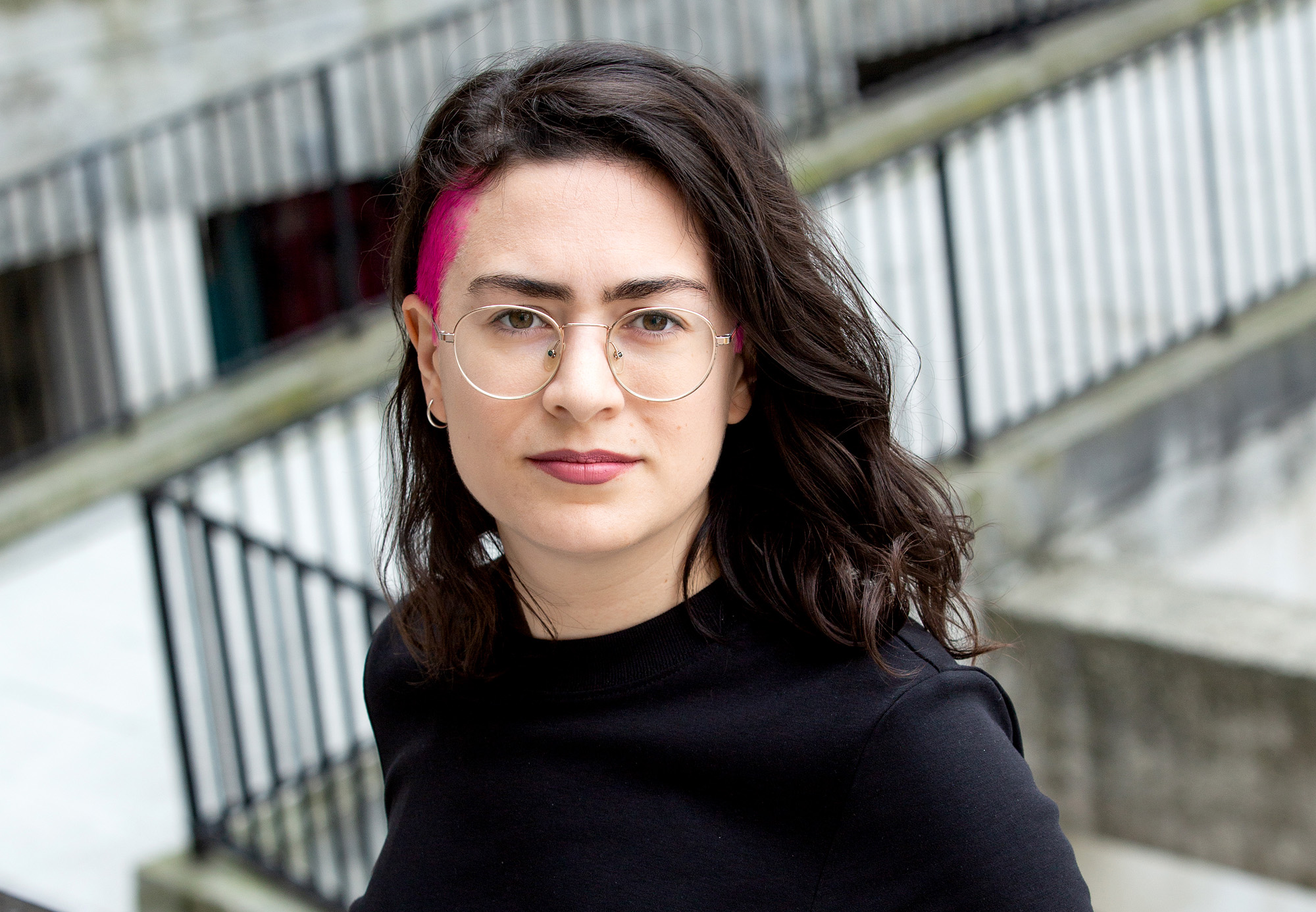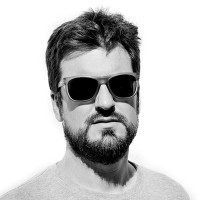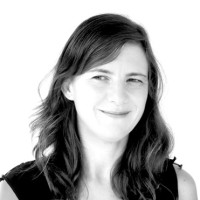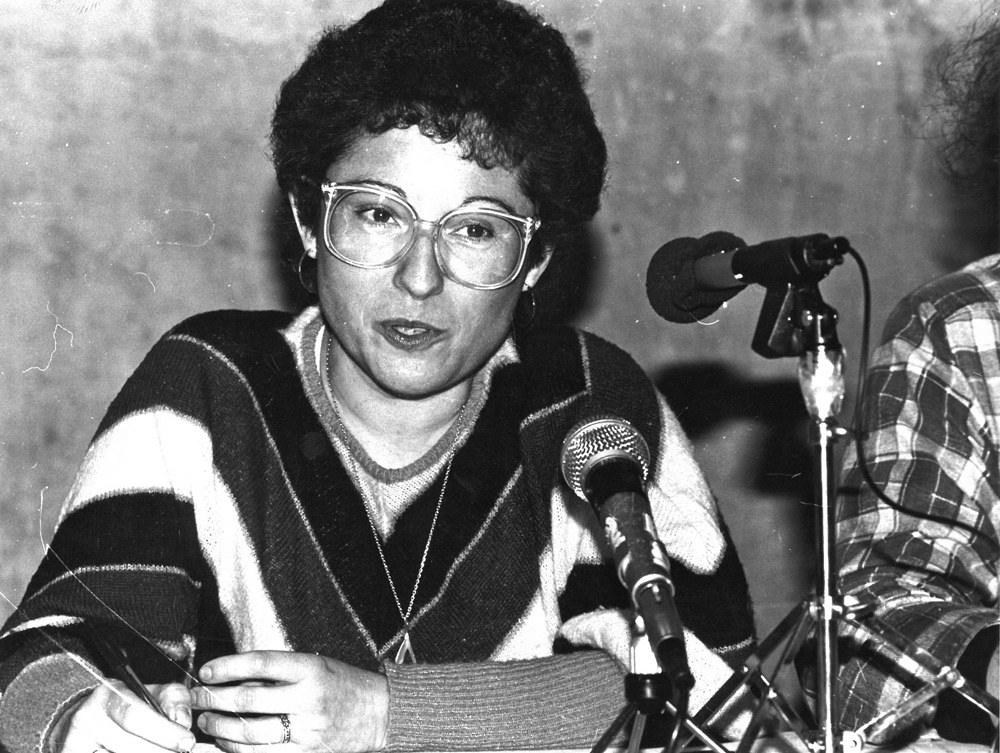The origin of the Basque, science fiction described by the grandson of Pello Mari Otaño "Beltxak"
- On November 29, the Gu ta gutarrak story was presented in Zizurkil, as part of the Euskaraldia initiative. One of the great Argentine scientists, Magdalena Moujan Otaño, wrote around 1965 and was translated by Xalbador Garmendia. We took this opportunity to meet Joxin Azkue and Julian Arrastoa: these are the ones who have illuminated the Argentine time of Pello Mari Otaño and have regained their legacy of verses.

Magdalena Moujan Otaño was born in Pahuajón (Argentina) in 1926. It is the granddaughter of the well-known bertsolari Pello Mari Otaño, the only daughter of Teresa, who was the eldest daughter of bertsolari. The most intimate relationship with the grandfather was that of three grandchildren who received their nostalgia and their love for the Basque Country, as well as their literary legacy. His grandfather gave them a very characteristic nickname. For those of Magdalena it would be Beltxa, Susana Ardanaz Otaño Txuri and Hector Ardanaz Otaño Nere.

Magdalena Moujan Otaño was a scientific eminence in Argentina. Doctor of Mathematics, worked in several universities as Honoris Causa, Researcher and in the National Atomic Energy Committee and in the Energy Directorate of the Province of Buenos Aires. It was the same one who performed the mathematical calculations to complete Argentina's nuclear program. But he also got a great name in literature: he wrote science fiction. His works have been published in various anthologies of Argentina, including that of Jorge Luis Borges. The story Gu ta Gurarrak was made with the 1968 Argentine Grand Prix of Science Fiction.
The path of the story through censorship
New Dimension was the science fiction and fantasy journal located in the Catalan countries and in 1970 wanted to publish the story Gu ta gutarrak. The Francoist Minister of Information, Manuel Fraga Iribarne, kidnapped this issue when they were about to be extracted and distributed from the press, accusing him of "threatening the unity of Spain". Almost 50 years later, the Asociación Cultural Hernandorena de Zizurkil has published a story that, with the help of the Zizurkil City Hall, will reach all the houses. The Aiurri medium will also distribute the information among its subscribers in the Aiztondo Valley. “That is the contribution we have made to the Basque Country,” stressed Joxin Azkue, a member of the association Hernandorena, and Julian Arrastoa. The book can be read, on the one hand, in Euskera, and, if taken from behind, in Spanish, since they have made room for the original story written by Moujan
Otaño. The translation of the book has been made by the recently deceased Xalbador Garmendia Etxeberria and is illustrated with the illustrations of María Altuna Lizarraga.
Along with the story Gu ta gutarrak, they have included in the book the love letter that Moujan Otaño wrote to the Basque Country in the last year of his life. The story Gu ta gutarrak deals with humor with the enigma of the origin of Euskera. A Basque couple will travel to Palomares de Málaga on their honeymoon, fully soaking the radiations of the hydrogen bombs emitted by the US Army aircraft. Fraga Iribarne, who would censor
the story, also bathed on the beach to convince the population that there was no danger. Fraga we don't know, but the protagonists of the story were affected by radiation, and their children will be superqualified: oversized and
intelligent. One of them will invent the time machine, and in the vicinity of the cave of Altxerri, in Orio, the family, the workers of that scientific project and Txuri, Beltxa and Nere, will search in time for the origin of the Basque. The round ending of the story will surprise the reader in the surprise. The story is full of historical references, and it is also a very clear expression of devotion to Christianity.

Heritage of the Otaño
The legacy of Pello Mari Otaño in Argentina has been recovered by members of the Hernandorena Cultural Association. Antonio Zavala received the news from Zizurkil's bertsolaris family in two of the largest volumes of literature. But as you know, Pello Mari Otaño went to Argentina and Zavala allowed the Argentinians to continue with their steles. According to Azkue, “Otaño went from Zizurkil to Donostia because his family was liberal and here he was poorly seen. From there he went to America as a deserter. And in Argentina, throughout his life, he had an ideological evolution. As a liberal, a supporter of the Spanish in the war in Cuba, he ended up as an internationalist abertzale after learning about the works of Sabino Arana. After his death, in his last verse, Pello Mari Otaño praised the first centenary of Argentina’s independence from Spain and claimed the freedom of ‘all who are on
Tierra Vasca and the catibus’. Thus, according to Azkue, they began to search for the news
in Otaño Argentina: “Our daughter was studying in Argentina and we happened to know that a grandson from Otaño was alive. In 2009, we went to Argentina, where Susana Ardanaz Otaño Txuri. At first he showed a very formal attitude, ‘I have spent my time, I have been a couple of times in Euskal Herria but they have all died...’. Very understandable, taking into account that I was already 80 years old, but it gradually opened up and ended up totally warm with the subject, and took care of us as children. Talking to the family he got documents and gradually we linked the puzzle. The years that Otaño lived in Argentina were brought to light.”
In Argentina, four historical books were found: One was Oroimenak, where Otaño wrote his verses. It is curious that for the family the name of this book was The Bound Book (associated book), as it was wrapped in strings, and it was a historical book for the family. The first verse that Otaño wrote in that book in 1894 clearly expresses his intention:
Seeing that in
my work
they multiply and forget
the things that are not written, I want to
put in this book those that
remind me, so that today or
tomorrow my children learn.
When they found the second book, he didn't forget it. “Pello Mari Otaño was an Euskera professor in Argentina. While we were looking at the old papers with the white ones, at a certain point he took a role. Look and a decline! It was a booklet, The Chair of Bascuence written by himself, with all his declination, by sections. ‘If I can be’ in Spanish and next to it the equivalent in Basque. He also perfectly mastered Spanish. And the class was also marked: December 4, these subjects, ‘superlative...’. 7 December, the others. He says he stopped teaching Euskera because no student was going. No wonder, given the way we teach. If it is difficult for us, what you need for them...”.
The other two books were published in Buenos Aires: Alkar of 1904, a collection of his selected poems and Poesías Vascas, presented in the literary competition organized in 1906 by the Argentine association La Euskaria. After the death of Txuri, the family made available to the Hernandorena Cultural Association of Zizurkil the legacy of Pello Mari Otaño; the four books and the story Gu ta gutarrak. For their better conservation and availability to all citizens, they were transferred to the Koldo Mitxelena Documentation Center.

BURIED NEXT TO PELLO MARI OTAÑO
Magdalena Moujan Otaño Belcha spent the last years in Mar de Plata and died in 2005, aged 79. He was buried in the cemetery of La Plata. It was the track that Azkue and Arrastoa drove to the body of Pello Mari Otaño. Until then no one in Euskal Herria knew where the bones were that the great bertsolari wanted to leave in the chestnut that precedes his home of
Zizurkil. This is how Azkue and Arrastoa told the discovery of the tomb:
“Pello Mari Otaño performed a thousand trades in Argentina. Lobster went to Rosario to do a job against the plague, became ill and died. He was buried in Rosario, where he died. We contacted the Euskal Etxea de Rosario and were told that someone from the family had taken him from there to another cemetery. We decided to look at La Plata, where the family of his descendant lived (Txuri, Beltxa, Nere...). La Plata's cemetery is a big world. We had to look for file by file. We were asked when it was. We knew when he died, but we didn't know when he had been buried in the La Plata cemetery. Suddenly we remembered that Belcha wanted to bury him with his grandfather. As we knew when Belcha died, we looked at
his file and we found the niche wall of the Otaños. One is Beltxa, and another is the one that puts ‘grandfather and grandmother’”.
In different times human cultures have internalized changes, cultures live in a symbiosis with the environment, knowing that what we understand by environment are many things: physical space, virtual space, the ways of relating between human beings (around and other beings and... [+]
Wu Ming literatur kolektiboaren Proletkult (2018) “objektu narratibo” berriak sozialismoa eta zientzia fikzioa lotzen ditu, Sobiet Batasuneko zientzia fikzio klasikoaren aitzindari izan zen Izar gorria (1908) nobela eta haren egile Aleksandr Bogdanov boltxebikearen... [+]
Zientzia fikziozkoa zirudien errealitatea izan da gure elkarrizketa. Bilbiko Xake espazioan ezagutu genuen elkar, pandemia-aurreko garaian, gai distopikoak ardatz zituen bertso-saio baten aitzakian. Eta orain pandemia mundial baten testuinguruan pantailatik pantailara hitz egin... [+]
Badirudi hasi garela argia ikusten tunelaren bukaeran. Fasez fase, baina pixkanaka irekitzen ari da, primaderako lilia nola, etxealdia –gurea etxealdia izaten ari baita, ez inondik ere itxialdia, pasa den asteko ARGIAn irakurri ahal izan genuen bezala; eta ez dakit nola... [+]
Klima aldatzen ari zaigun garai honetan –edo hobeki erranda: klima eraldatzen ari garen garai honetan–, etorkizun sozio-ekonomiko-politikoa iragarri gaitza eta iluna iruditzen zaigun une honetan, jende arteko elkartasunak maiz porrot egiten duen momentuan, galtzen... [+]
Mayi Pelot «idazlesa» gaztea da, gure aldean noski, eta atsegin ematen zuen igande arratsalde famatu batez haren arpegia irri zoriontsu batez hornitua ikusteak: bere lehen liburua, euskarazkoa, eskuartean zeukan, olinpiadetan ardietsi urrezko medaila bat bezala.







